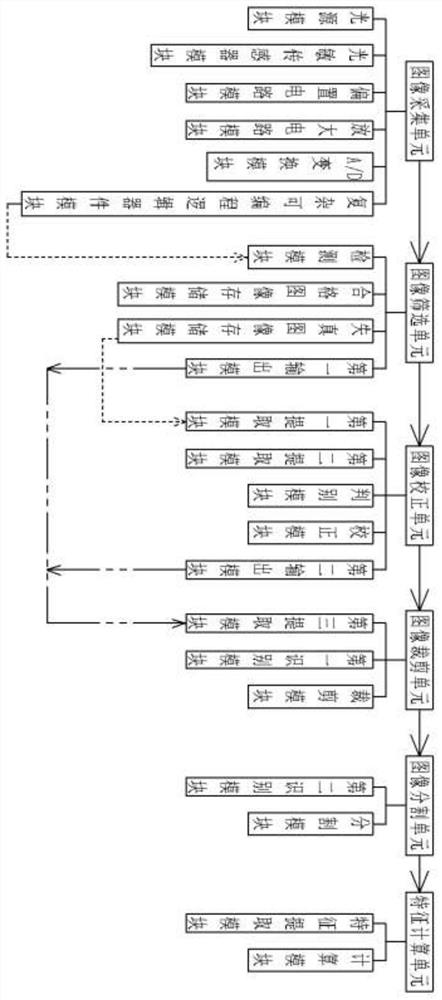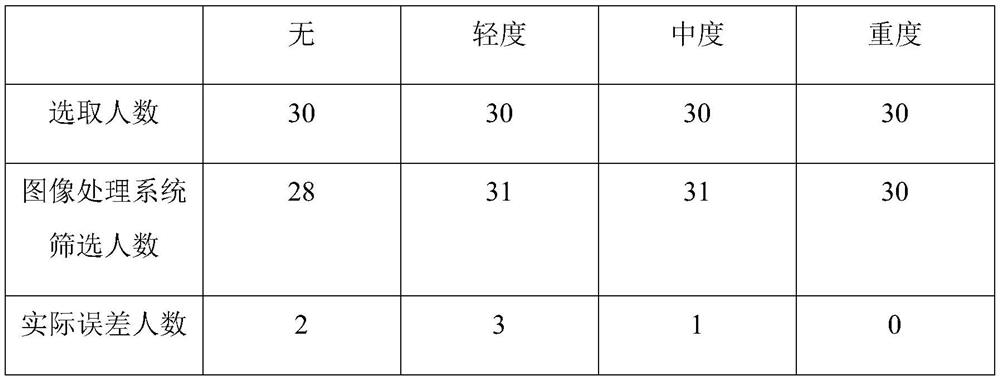Fundus image processing system and method for cataract diagnosis
A fundus image and processing method technology, which is applied in image data processing, image enhancement, image analysis, etc., can solve problems such as low efficiency of manual inspection, and achieve the effects of reducing labor input costs, fast processing, and high real-time performance
- Summary
- Abstract
- Description
- Claims
- Application Information
AI Technical Summary
Benefits of technology
Problems solved by technology
Method used
Image
Examples
Embodiment
[0028] Example: such as figure 1 The shown fundus image processing system for cataract diagnosis includes an image acquisition unit for collecting image information of the patient's eyes, an image screening unit for screening the collected image information and marking distorted image information, An image correction unit for correcting the collected distorted image information, an image cropping unit for region cropping the fundus image corrected by the image correction unit, an image segmentation unit for further removing the clipping residual region, and A feature calculation unit for performing feature calculation on the final fundus image;
[0029] The image acquisition unit includes a light source module for light compensation during image acquisition, a photosensitive sensor module for sensing light on the patient's fundus, a bias circuit module, an amplification circuit module, and an amplifier circuit module for adjusting, amplifying, and converting the signal of the ...
experiment example
[0044] Experimental example: Cataract patients diagnosed with different degrees of illness and other ophthalmic disease patients without cataract symptoms were selected in an eye hospital in a city to conduct simulation processing experiments using the fundus image processing system of this embodiment. The specific processing results are as follows:
[0045]
[0046] In actual processing, the number of errors is specifically: 2 patients without cataracts are classified as mild patients, and 1 patient with mild cataracts is identified as moderate patients.
[0047] Conclusion: It can be seen from the above table that the total number of actual errors is 6 people, accounting for 5% of the total number of people, so the actual accuracy rate of this experiment is 95%.
PUM
 Login to View More
Login to View More Abstract
Description
Claims
Application Information
 Login to View More
Login to View More - R&D
- Intellectual Property
- Life Sciences
- Materials
- Tech Scout
- Unparalleled Data Quality
- Higher Quality Content
- 60% Fewer Hallucinations
Browse by: Latest US Patents, China's latest patents, Technical Efficacy Thesaurus, Application Domain, Technology Topic, Popular Technical Reports.
© 2025 PatSnap. All rights reserved.Legal|Privacy policy|Modern Slavery Act Transparency Statement|Sitemap|About US| Contact US: help@patsnap.com


